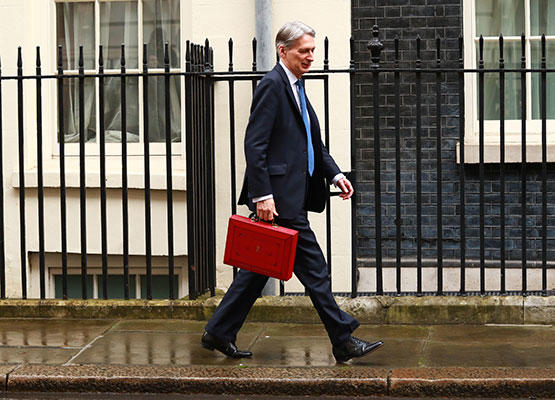- Home
- IPSE News
- Latest news
- The self-employed ready for Spring Statement
The self-employed ready for Spring Statement
- 9 Mar 2018

After last year’s Spring Budget, when the Chancellor U-turned on a high-profile attempt to raise Class 4 NICs, Tuesday’s Spring Statement, with no fiscal announcements expected, is unlikely to deliver any headline polices.
In his 2016 Autumn Statement, the Chancellor announced that there would only be one fiscal event per year from 2018: the Autumn Budget. The move from two fiscal events to one is not uncommon, however, with Ken Clarke operating a similar model during his reign as Chancellor in the 1990s.
One fiscal event per year is common across Europe and is intended to provide businesses with additional confidence relating to the stability of tax policy – a move IPSE has long called for.
The Chancellor has provided assurance that there will be no policy changes announced and instead a short speech will address OBR forecasts relating to growth, spending and productivity. There is, however, the possibility that the Chancellor will take the opportunity to announce a series of consultations – and the big one we’ll be watching out for is the promised consultation on extending last year’s IR35 changes from the public to the private sector.
In November’s Red Book, the Government announced it would consult on tackling, “non-compliance in the private sector, drawing on the experience of the public-sector reforms, including through external research already commissioned by the government and due to be published in 2018.”
We know only too well that IR35 is a disastrous policy that heaps huge administrative burdens onto businesses, stifles the supply of skilled, flexible professionals and results in legitimate and perfectly tax compliant contractors unfairly overpaying tax.
So, we’ll be ensuring the Government are well aware of the damaging realities of this ill-conceived and inhibiting legislation. Because, in a time of great economic and political uncertainty, we need to utilise this highly-skilled cohort and unfortunately IR35 is nothing but a hinderance to the growth, flexibility and expertise the UK needs.
The Government have been extremely quiet on the prospect of any announcements however. So, to ascertain what we can expect to hear at the Spring Statement, it is important that we look back to the Chancellor’s response to OBR forecasts in the Autumn.
Economic forecasts from the Autumn Budget made unwelcome reading. Productivity growth was downgraded from 2.1 per cent to 1.2 per cent while output per hour was forecast at 4.6 per cent lower than had been previously anticipated.
As a result, economic growth was due to slow and borrowing was due to increase by £91 billion over the current parliament when compared with the initial predictions.
Since the Autumn Budget in November, however, the economic situation has improved somewhat. Productivity growth in the last two quarters has been at its highest for some years – 0.9 per cent in Q3 and 0.8 per cent in Q4. While it remains too early to call this a trend, the Chancellor will undoubtedly be happy if this growth continues.
Similarly, economic growth has since been revised up over the short-term. In 2017 the economy grew by 1.7 per cent – above the predicted 1.5 per cent. The Bank of England has since upgraded its 2018 forecast to two per cent.
Both developments will provide additional headroom for the Chancellor’s fiscal targets if they come to fruition. Public sector borrowing is on course to be its lowest since 2007, while tax returns completed in January offer an additional boost to the Chancellor.
The Spring Statement, whilst containing no fiscal changes, will certainly be important for self-employed people. It will offer further insight into how the economy is performing and may touch on consultations that would have a major impact on the self-employed workforce. Whilst the Statement is expected to be no longer than 20 minutes, it could have long-term significance.
Meet the author

Tom Purvis
Political and Economic Adviser
Find out more about our work
